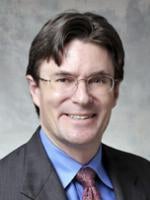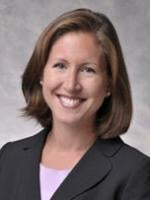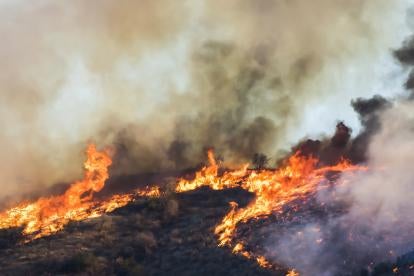Energy, Infrastructure, and Resources Alert
Employers in the timber industry should take note of two new safety rules that take effect on 15 June 2022. These rules, which are intended to protect workers from heat-related illnesses and wildfire smoke, are mandatory for employers of outdoor workers and may impact harvests and other forestry activities this summer. Both rules mirror requirements that were initially implemented last year but contain new and potentially significant updates.
Both rules carry potentially stiff penalties if they are not followed. For example, employers who violate the rules can receive citations and related fines. Employers could also face litigation, and a violation of these rules could expand potential liability (for example, by escaping the workers compensation bar or providing evidence of fault in subsequent litigation). Violations of break requirements could also result in wage claims based on failure to pay employees for the missed breaks.
With this in mind, forestry employers would do well to familiarize themselves with these two rules and ensure that they are followed in the field.
2022 EMERGENCY DOSH RULE ON AMBIENT HEAT EXPOSURE
In 2021, the Washington Division of Occupational Safety and Health (DOSH) issued an emergency rule establishing preventative measures employers must take to minimize the risk of heat-related illnesses in high-heat environments. The 2021 rule required employers to provide suitably cool drinking water and authorized employees to take preventative cool-down rest breaks when they felt they needed them. This part of the rule was triggered by threshold temperature requirements of 52, 77, and 89 degrees Fahrenheit (°F), depending on the type of clothing and protective equipment worn by employees. Above 100 °F, the rule mandated that employers ensure that workers take at least 10 minutes every two hours for employees to cool down in the shade or another suitable area provided by the employer.
On 1 June 2022, DOSH released a similar emergency rule for 2022, which will be effective from 15 June to 29 September 2022. The 2022 rule is different in several key ways:
-
The new rule lowers the trigger for mandatory 10 minute cool-down breaks from 100 °F to 89 °F. Above 89 °F, employers must:
-
ensure employees take mandatory 10 minute breaks once every two hours to cool down;
-
ensure employees can communicate with supervisors; and
-
ensure employees are observed for signs of heat-related illness by supervisors or buddies, or are subject to regular electronic check-ins when working alone.
-
-
The new rule clarifies the definition of adequate shade to require at least enough shade to accommodate employees sitting in a normal posture.
-
Both the 2021 and 2022 rules encourage employers to closely observe employees who have not acclimatized to high heat, including new employees and employees returning after a prolonged absence. The new rule clarifies the definition of acclimatization as a gradual adaptation to high heat that occurs over a 14 day period and can be lost after a week away from working in the heat.
This emergency rule will go into effect without an opportunity for public comment. However, DOSH states that it intends to enact a permanent rule and initiated the rulemaking process on 17 August 2021. Look for future stakeholder meetings and other opportunities to comment here.
2022 EMERGENCY DOSH RULE ON WILDFIRE SMOKE
In 2021, DOSH issued an emergency rule establishing preventative measures employers must take to mitigate risks associated with wildfire smoke inhalation. The 2021 rule applied to workplaces where the employer should reasonably anticipate that employees may be exposed to smoke. The 2021 rule required employers to determine pollution levels before each shift and periodically as needed to protect the health of employees by using the particulate matter (PM) NowCast air quality index (AQI) or by taking direct measurements of the air. Employers were required to alert employees when the fine particulate matter (PM2.5) levels reached 55.5 micrograms per cubic meter of air (μg/m3) (AQI 151) and to advise them of available protective measures. The rule established training requirements and required employers to permit medical treatment for symptoms of injury or illness due to wildfire smoke exposure. The rule encouraged employers to implement exposure controls and provide respirators above 20.5 μg/m3 (AQI 69) and required these measures above 55.5 μg/m3 (AQI 151).
On 1 June 2022, DOSH released its emergency rule for 2022, which will be effective from 15 June to 29 September 2022. The 2022 rule has several important differences:
-
The new rule requires employers to alert employees of the pollution hazard when:
-
At least two consecutive PM2.5 readings are 20.5 μg/m3 (AQI 69) or more;
-
The PM2.5 is 35.5 μg/m3 (AQI 101) or more;
-
The PM2.5 is 250.5 μg/m3 (AQI 301) or more; or
-
The PM2.5 is 555 μg/m3 (beyond the AQI) or more.
-
The new rule lowers the threshold at which employers are required to implement exposure controls and provide respirators to employees from 55.5 μg/m3 (AQI 151) to 35.5 μg/m3 (AQI 101). Moreover, the respirators must be directly distributed to the employees or provided in a readily accessible location on the worksite.
-
The new rule requires employees to be enrolled in a complete respiratory protection program when the PM2.5 is above 555 μg/m3 (beyond AQI measurements) and requires employers to provide, and mandate the wearing of, certain high-efficiency particulate air filters at that PM2.5 level.
This emergency rule also goes into effect without an opportunity for public comment, but DOSH once again states that a permanent rule is in the works. DOSH initiated the rulemaking process on 20 October 2020. Look for future stakeholder meetings and other opportunities to comment here.
CONCLUSION
When it comes to labor and employment rules, an ounce of prevention can be better than a pound of cure. Employers in the timber industry would be wise to review their planned operations for this summer and ensure that they are ready for when the heat climbs above 89 °F or wildfire smoke fills the air.
We acknowledge the contributions to this publication from our summer associate Derek Kalbfleish.





 i
i


